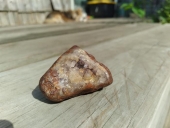
 49
49





 He was a big guy, I'm a small female. It was interesting when we worked together on things, seeing which tool we each habitually used, and that they weren't the same at all for the same tasks.
He was a big guy, I'm a small female. It was interesting when we worked together on things, seeing which tool we each habitually used, and that they weren't the same at all for the same tasks.
 For the no power people out there, old fashioned crank drills, yankee screwdrivers, and eggbeater type drills all use hand power, and can use most power bits (yankee screwdrivers need an adapter made to be able use modern bits, I can find you a link to it if anyone wants it.)
For the no power people out there, old fashioned crank drills, yankee screwdrivers, and eggbeater type drills all use hand power, and can use most power bits (yankee screwdrivers need an adapter made to be able use modern bits, I can find you a link to it if anyone wants it.)


Gardens in my mind never need water
Castles in the air never have a wet basement
Well made buildings are fractal -- equally intelligent design at every level of detail.
Bright sparks remind others that they too can dance
What I am looking for is looking for me too!

 8
8





 3
3




Idle dreamer
 11
11




"We're all just walking each other home." -Ram Dass
"Be a lamp, or a lifeboat, or a ladder."-Rumi
"It's all one song!" -Neil Young
 11
11




Pearl Sutton wrote:
General tool thoughts:
Which tools might be useful to learn?
Drills I agree with everything you wrote about drills but wanted to add a couple of things. Unless you are using some uber battery powered drill, corded drills rock. I build a lot of items using a Kreg jig, and I use a corded power drill to drill holes and a battery powered drill to drive the screws because drilling the holes sucks the battery down fast.
Saws
Jigsaw/Saber Saw Thank you for this! I don't use a saber saw much but what you wrote was brilliant! I am very much going to change my presentation to cover the saber saw because you made your point so eloquently!
Circular saws Are tricky but a couple of things make a huge difference, using a lighter homeowner model does make it somewhat easier, but using the right blade and the a SHARP one makes a world of difference.
Chop Saws Great tools
Radial Arm Saws Is a great tool to have on a homestead, available cheap used ($100-$150) all the time. They are not without their risks and are not as safe as chop saws. Again, using the correct blade made for a chop saw (NOT a table saw blade) will make them safer but they are SO handy if you have room for one!
Table Saws Are a very difficult and scary tool to use without being shown how to use one first. In addition, one needs to know how to align the fence and the blade correctly or wood will bind and either burn or do nasty things and scare the snot out of you. Using a correct blade and one that is sharp makes for a HUGE improvement on one as does having the fence correctly aligned, there are a host of youtube videos on that process.
Hand SawsWestern saws cut on the forward stroke, Japanese saws cut on the pull stroke and have smaller handles. Using saws on wood, it is important to know that you need a TWO kinds of saws. If you are cutting WITH the grain, from the top of a board to the bottom, you need a RIP blade and if you are cutting across the grain, you need a CROSS CUT blade:
This is true of all cutting tools although today they make amazing combo blades but it is useful to understand this concept. Think of wood as fibers running lengthwise, if you are cutting along the fibers you need shovels to sever them and lift them out, if you are cutting across the fibers, you need knives to sever them. Stanley makes a small handsaw that is like a western version of a Japanese saw called shark that is both cheap and easy to use.
One of the things I emphasis in my classes is that having a good workbench makes doing any of this VASTLY easier. No it won't lift heavy beams up onto it but it makes using any tool easier, safer, and more accurate. Drilling some holes for bench dogs and adding a simple vise makes doing a lot of jobs vastly easier
, Sturdy legs and a plywood top are all you need, it doesn't need to be heirloom quality to be a great bench.
An even simpler addition to your basic flat stable workbench is a saw hook, it just sits on top of a bench has a leg that hangs over the face and another on on the top and allows you to cut things easily...
 9
9




 Quick comments as dinner tries to burn:
Quick comments as dinner tries to burn:

Gardens in my mind never need water
Castles in the air never have a wet basement
Well made buildings are fractal -- equally intelligent design at every level of detail.
Bright sparks remind others that they too can dance
What I am looking for is looking for me too!

 9
9




 He was a big guy. I was 5'6" and about 125 lbs.
He was a big guy. I was 5'6" and about 125 lbs.
 7
7




 5
5




 5
5




An idea: the D part can be taken off of a lot of those, and put onto a handle you have cut to the length you like. Look at the D, if it's on a cheap thing, it's just metal or plastic tube that is slid onto the shaft and has a couple of screws to hold it still. And as Michael Bushman mentioned, shave down the handles to get them the diameter that you find comfortable (and shape, some of mine are oval for being to hold them against them pivoting when I don't want them to.) Looks like the Japanese site the guys above threw has D handle shovels in 2 lengths, you might look for guesses of what length you might want to cut something down to. Also I had similar problems, my dad, not a husband, "use this!" "I can barely pick this up!!" That's a lot of what got me learning how to cope doing construction in a female body with tools designed for men.I like the ones with a D handle on the end, but most of those seem to be on really short handled tools.
 I like the center handle saws, I am thinking about modifying a hand saw with a T handle (I think some 2 man lumbering saws have them?) so it's center pull. Something my dad had was some kind of saw for sheetrock (?) goes on a handle like a trowel, not sure what they are for (or their name) but the way you use some of the saws I see in your porn makes me think I need to experiment with those.
I like the center handle saws, I am thinking about modifying a hand saw with a T handle (I think some 2 man lumbering saws have them?) so it's center pull. Something my dad had was some kind of saw for sheetrock (?) goes on a handle like a trowel, not sure what they are for (or their name) but the way you use some of the saws I see in your porn makes me think I need to experiment with those. Gardens in my mind never need water
Castles in the air never have a wet basement
Well made buildings are fractal -- equally intelligent design at every level of detail.
Bright sparks remind others that they too can dance
What I am looking for is looking for me too!

 9
9




I don't let my new apprentices(all male save 1) use any of the tools you mention until they have demonstrated competency using hand tools. We use mostly Japanese hand tools and find they are nearly as fast as power tools when you take into consideration set up, safety and cleanup for most of the general home improvement type work that we do.
Don't let perfect be the enemy of good.
 5
5




 13
13




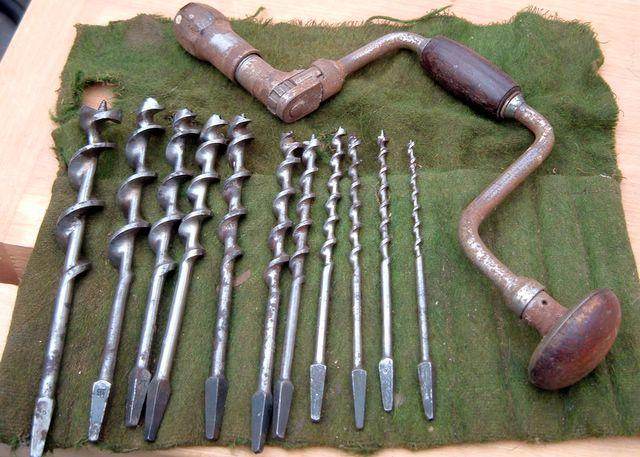
 7
7




Michael Bushman wrote:Don't forget the original cordless drill...Can be had cheaply for $20 just make sure the jaws are not missing or too heavily damaged, these grip modern screw bits perfectly, they are not as fast as a drill but will go anywhere and help build strength too. Learn to sharpen the bits, rusty ones work fine but WILL need to be sharpened.
Also, find a saw shop that will sharpen western style saws, almost nobody sharpens Japanese saws, the blades are super hard and last but are mostly then tossed. Sharp western saws are a dream to use and unlike Japanese saws can be guided and corrected if your line starts to wander. Western saws can be had cheap and you find cool old Disston's once in a while, I have one from the early 1900s and another from the late 1800s, both work great.
Stanley makes a line of saws that are shorter than a standard full size D handled saw but longer than a classic Japanese pull saw, they have a stiffer blade than a Japanese saw so you can guide the blade easier, they are also relatively cheap. Great all around saw.


"We're all just walking each other home." -Ram Dass
"Be a lamp, or a lifeboat, or a ladder."-Rumi
"It's all one song!" -Neil Young
 8
8





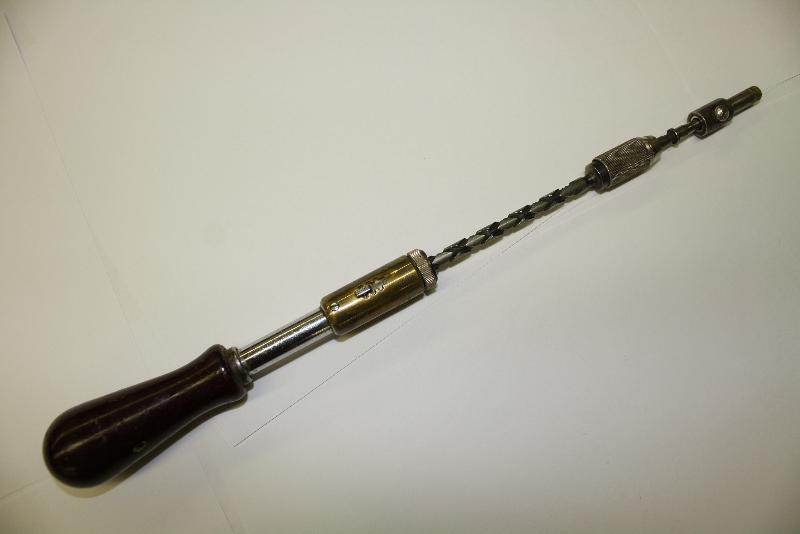
A woman can never have enough tools.

Gardens in my mind never need water
Castles in the air never have a wet basement
Well made buildings are fractal -- equally intelligent design at every level of detail.
Bright sparks remind others that they too can dance
What I am looking for is looking for me too!

 3
3





 5
5




 3
3




 1
1





Gardens in my mind never need water
Castles in the air never have a wet basement
Well made buildings are fractal -- equally intelligent design at every level of detail.
Bright sparks remind others that they too can dance
What I am looking for is looking for me too!

 1
1




 9
9




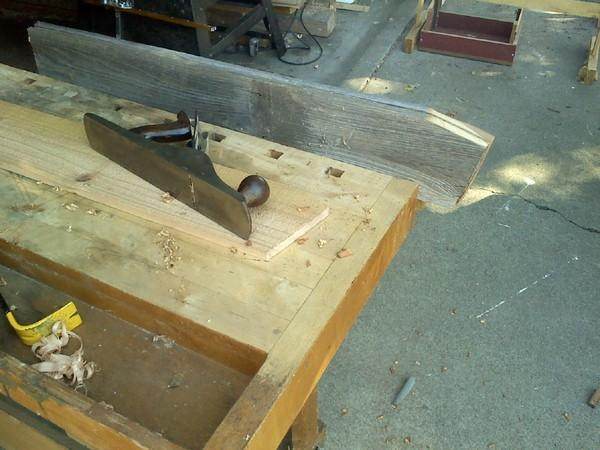
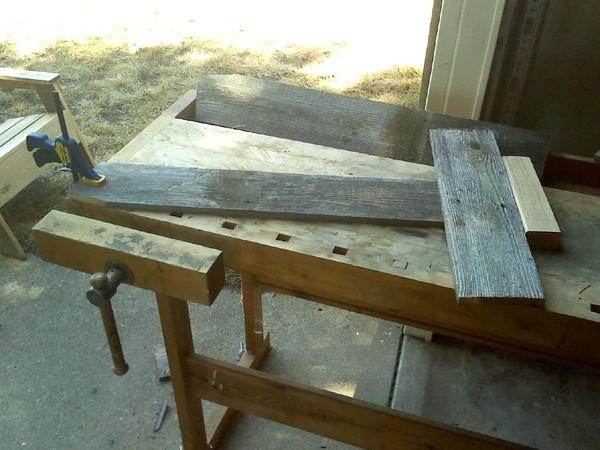
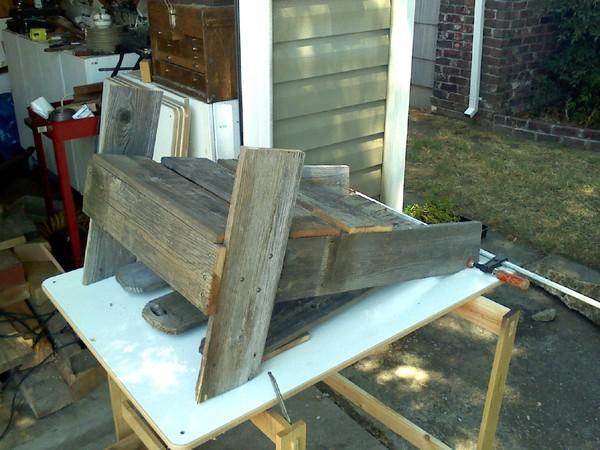
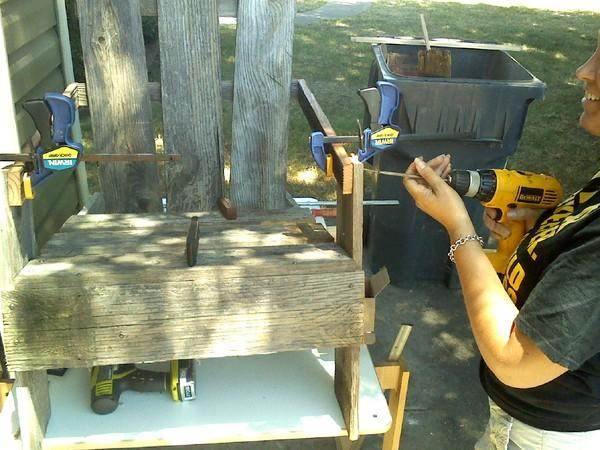
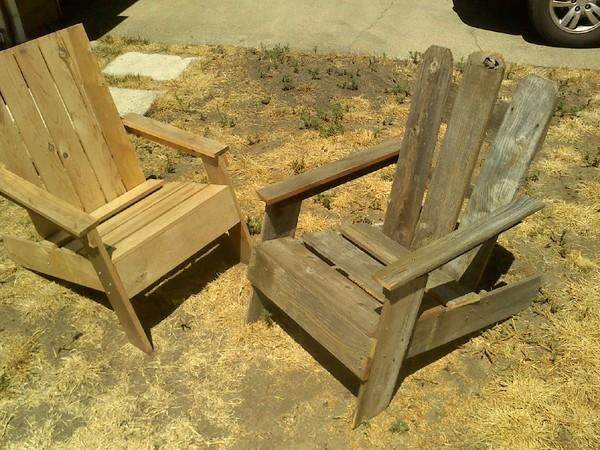
 5
5




I stole a number of things from here to improve the class I gave yesterday.
When I cook, I use countertops of different heights for different tasks. When I finally get my shop set up at my new place, I plan to do the multilevel countertops out there too. The right height for cutting things on the chop saw isn't the right height for scroll saw, isn't the right height for getting good leverage when abusing a piece of pipe into a pretzel in a bench vise... Worth considering, I thinka good workbench at the right height

Gardens in my mind never need water
Castles in the air never have a wet basement
Well made buildings are fractal -- equally intelligent design at every level of detail.
Bright sparks remind others that they too can dance
What I am looking for is looking for me too!

 6
6




With forty shades of green, it's hard to be blue.
Garg 'nuair dhùisgear! Virtutis Gloria Merces
 4
4




Karen Layne wrote:This thread is so cool. I love it.
Like when I have to use the sledgehammer to put in 6' t-post (and I'm only 5'3"), I know I'll feel it tomorrow but I need them put in place.
 1
1




With forty shades of green, it's hard to be blue.
Garg 'nuair dhùisgear! Virtutis Gloria Merces
 2
2




 2
2




Don't let perfect be the enemy of good.
 1
1




Michael Bushman wrote: ... these grip modern screw bits perfectly...
 3
3




![Filename: 68d3ff3d-b792-4fbb-b6c9-7391d2e75ac1_300.jpg
Description: [Thumbnail for 68d3ff3d-b792-4fbb-b6c9-7391d2e75ac1_300.jpg]](/t/57572/a/52197/68d3ff3d-b792-4fbb-b6c9-7391d2e75ac1_300.jpg)
 3
3




Pearl Sutton wrote: Michael Bushman:
I stole a number of things from here to improve the class I gave yesterday.
Yay!! That's the whole idea!!
One comment:When I cook, I use countertops of different heights for different tasks. When I finally get my shop set up at my new place, I plan to do the multilevel countertops out there too. The right height for cutting things on the chop saw isn't the right height for scroll saw, isn't the right height for getting good leverage when abusing a piece of pipe into a pretzel in a bench vise... Worth considering, I thinka good workbench at the right height

 1
1




Gardens in my mind never need water
Castles in the air never have a wet basement
Well made buildings are fractal -- equally intelligent design at every level of detail.
Bright sparks remind others that they too can dance
What I am looking for is looking for me too!

 1
1




 4
4





Kitui
 1
1




Gardens in my mind never need water
Castles in the air never have a wet basement
Well made buildings are fractal -- equally intelligent design at every level of detail.
Bright sparks remind others that they too can dance
What I am looking for is looking for me too!

 1
1




"Study books and observe nature; if they do not agree, throw away the books." ~ William A. Albrecht
 1
1




 7
7




 3
3




Kitui
 3
3




Gardens in my mind never need water
Castles in the air never have a wet basement
Well made buildings are fractal -- equally intelligent design at every level of detail.
Bright sparks remind others that they too can dance
What I am looking for is looking for me too!

 6
6





|
It is difficult to free fools from the chains they revere - Voltaire. tiny ad:
Play Your Way to a Sustainable Lifestyle: Uncover Permaculture Principles with Each Card
https://gardener-gift.com/
|
